

James Wong
2 Months Ago
With hybrid power, a new chassis, and a cabin that majors on comfort, the new Kluger GXL Hybrid could be a sweet spot in the range.
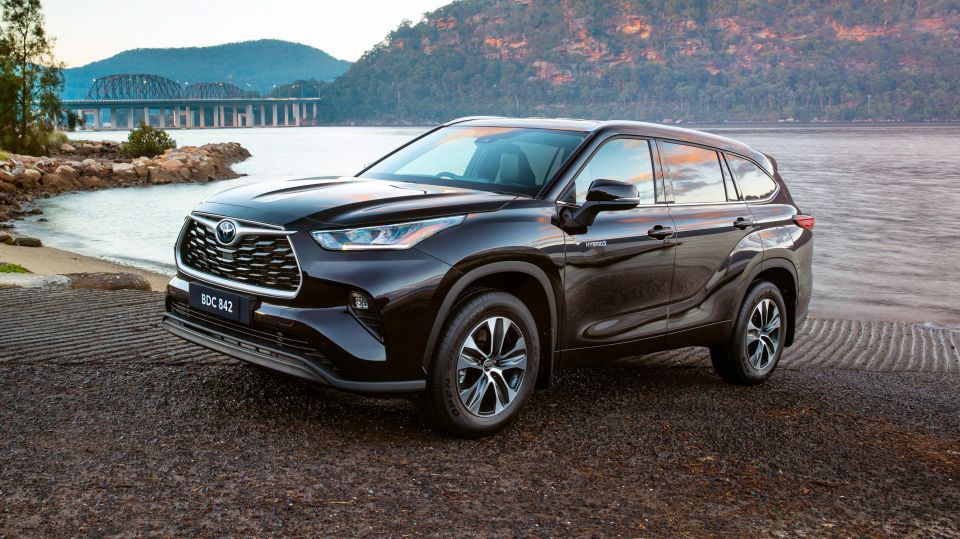
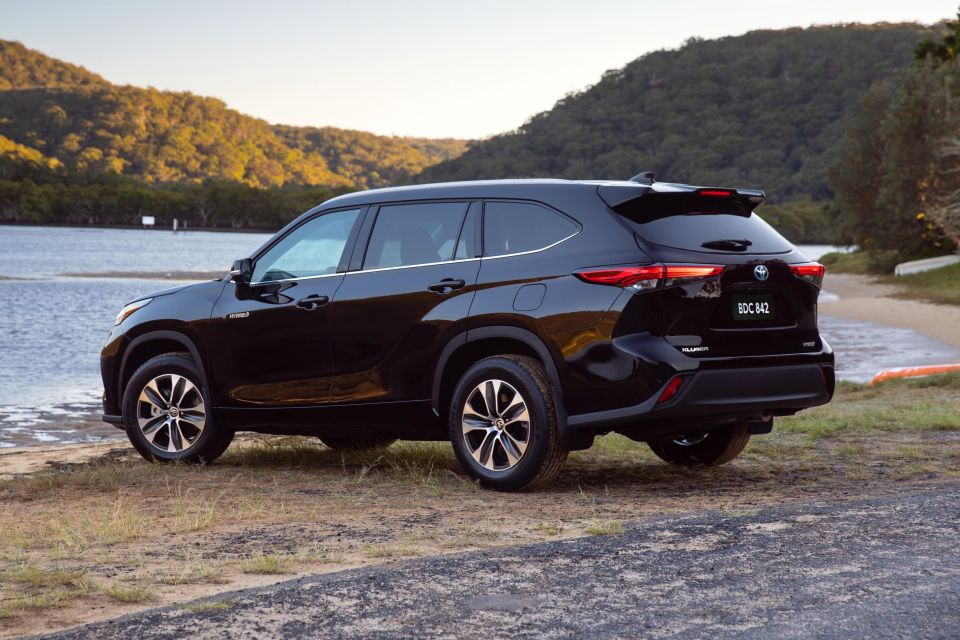

Contributor
New from
$44,850
excl. on-roads

Contributor
New from
$44,850
excl. on-roads


Contributor
New from
$44,850
excl. on-roads

Contributor
New from
$44,850
excl. on-roads
Quickly see how this car stacks up against its competition. Select any benchmark to see more details.
CarExpert helps new car buyers save thousands with expert reviews, honest advice, and transparent pricing – no dealer pressure and no sales games.
The Toyota Kluger might not have the history of the Corolla or RAV4, but it’s an institution among Australian families.
Now into its fourth generation, Toyota Australia has sold more than 190,000 since it launched locally in 2003.
The new Kluger is all about firsts. It’s the first built on Toyota’s new modular architecture, and the first to be offered in Australia with hybrid power. It’s also the first to offer a full suite of driver assists standard across the range.
The mid-range 2022 Toyota Kluger GXL AWD Hybrid on test here raises plenty of questions. Should you stick with the V6, or pay more for the electrified option?
And is the GXL a sweet spot in the range, or does it get lost between the GX and Grande?
There’s a huge price spread across the Kluger range, which kicks off at $47,650 and extends to $75,400 before on-road costs.
Our GXL AWD Hybrid sits right in the middle, with a starting price of $63,350 before on-roads.
That aligns it with the Hyundai Santa Fe Highlander 2.2D AWD ($65,200) and Palisade Elite 2.2D AWD ($65,600), the Kia Sorento GT-Line 2.2D AWD ($67,290 D/A) along with the Mazda CX-9 GT SP FWD ($63,490).
For those willing to haul their family in a people mover, not an SUV, the Kia Carnival range tops out at $69,990 drive-away, while the Hyundai Staria range runs to $66,500 before on-roads.

See the full price list below:
All prices exclude on-road costs.
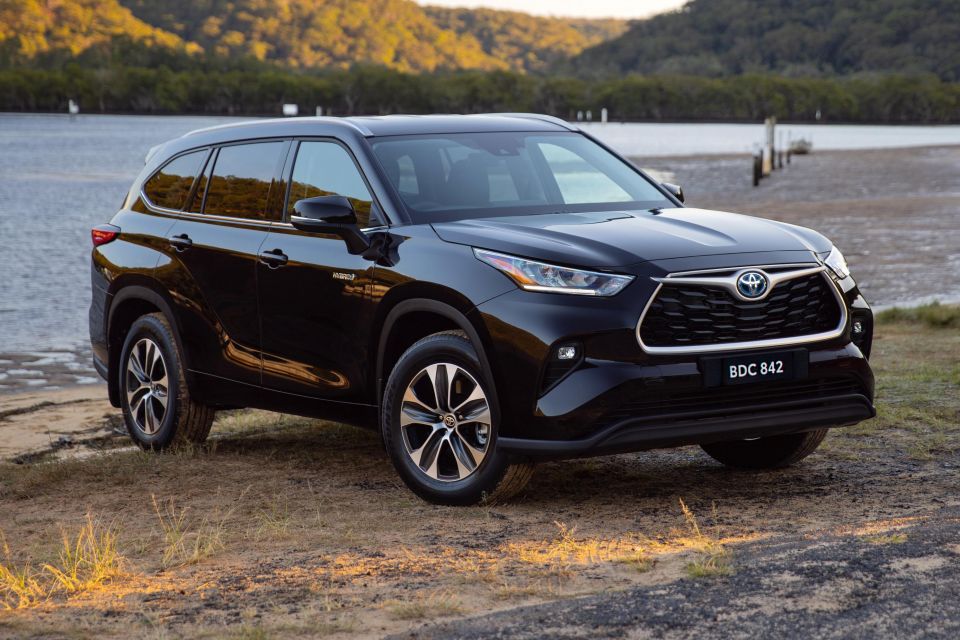
The Kluger GX comes standard with the following equipment:
Moving to the Kluger GXL adds:
The Kluger Grande adds:
There’s no doubt the GXL is generously equipped, but it’s a shame the Kluger isn’t available with the 12.3-inch touchscreen infotainment system offered abroad.
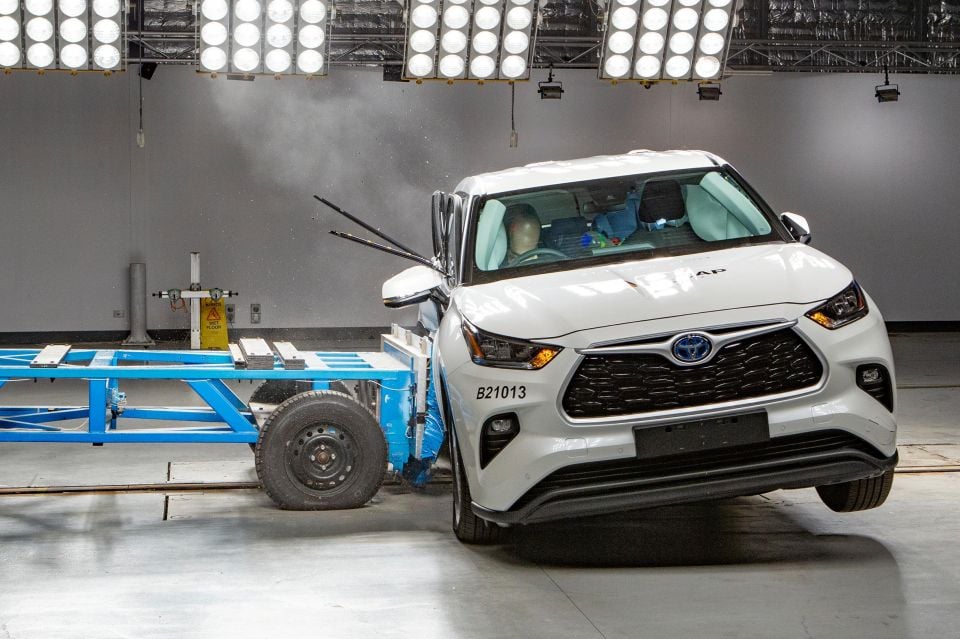
The 2022 Toyota Kluger has a five-star ANCAP safety rating based on testing carried out in 2021.
It scored 90 per cent for adult occupant protection, 88 per cent for child occupant protection, 76 per cent for vulnerable road user protection, and 82 per cent for safety assist.
All models come standard with Toyota’s Safety Sense package, which includes the following equipment:
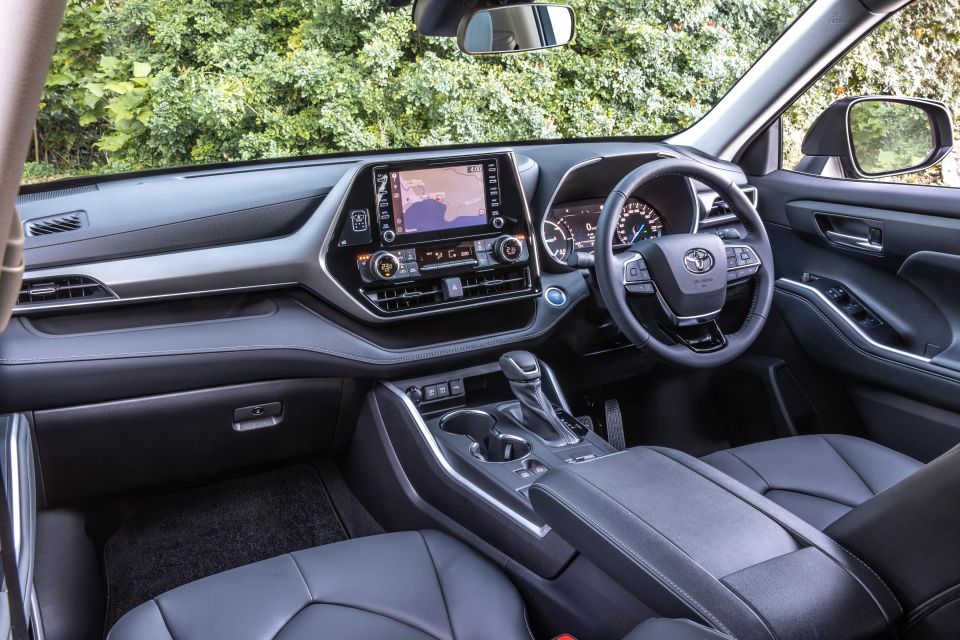
If you like your family cars big and comfortable, you’ll love the Kluger.
The driver and passenger sit in cushy, heated thrones that feel like La-Z-Boy recliners, and broad transmission tunnel gives a huge feeling of space.
Tall drivers will feel right at home on long stints behind the wheel, short drivers will be happy the seats can be raised right up to deliver a commanding view of the road ahead.
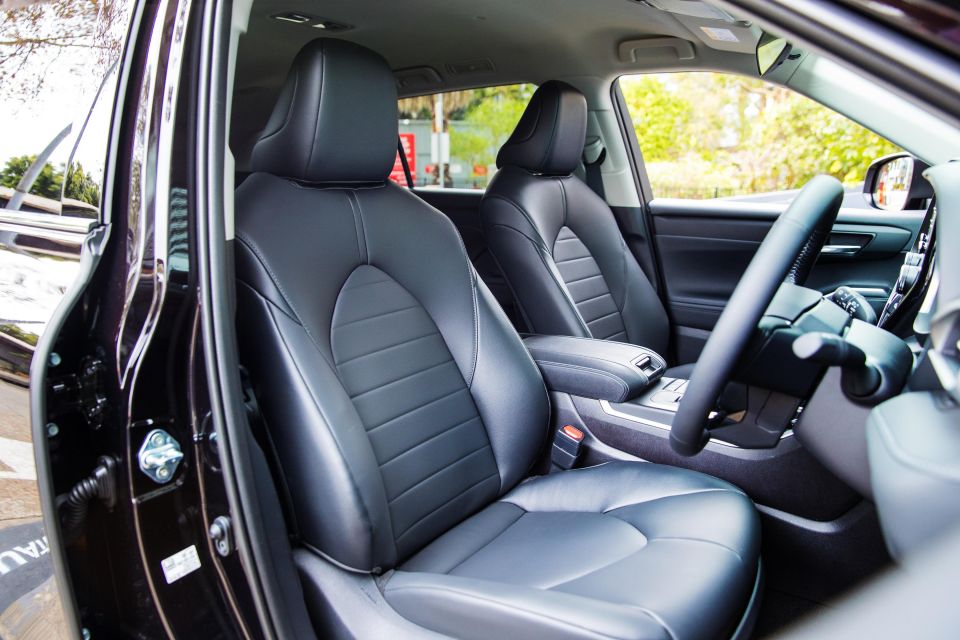
There’s an abundance of storage up front. Along with a massive central bin beneath the armrest, there’s a phone-sized space under the dashboard (with no wireless charger), cutouts in the dashboard itself, and massive door bins.
Toyota hasn’t made the leap to USB-C connectors, but the three USB-A ports up front (one for phone mirroring, two fast chargers) are a welcome inclusion.
It’s not all plain sailing, though. In the USA, the Kluger is available with a 12.3-inch infotainment display that fills the massive dashboard panel nicely. In Australia, we have to settle for the same 8.0-inch touchscreen used in the Corolla and RAV4.
In the Corolla it’s fine, in the bigger RAV4 it’s a bit disappointing. In the more expensive Kluger, it’s just not a good enough infotainment system.
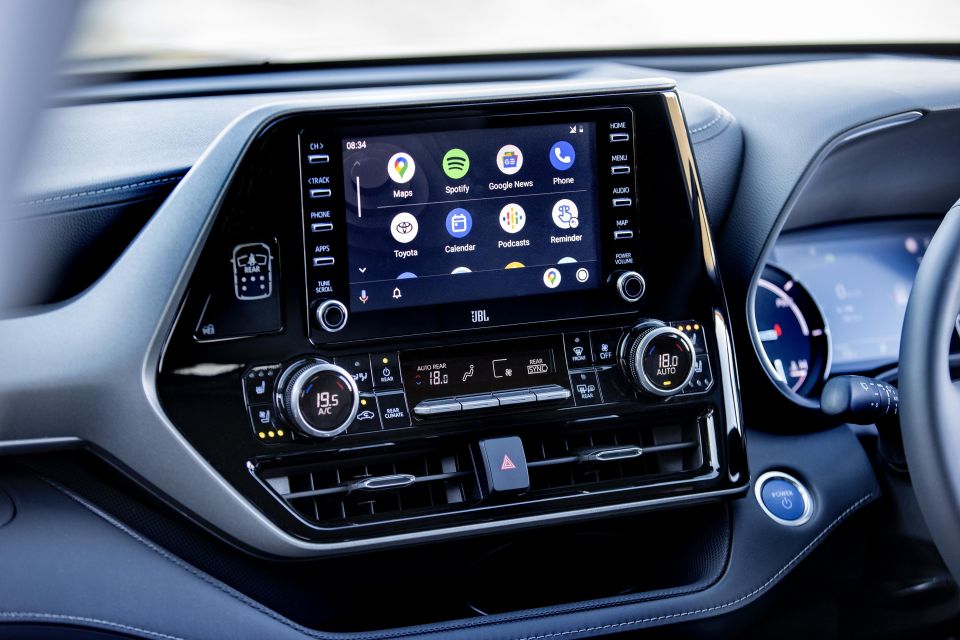
From the average graphics to the jumpy scrolling animations, to the cheap plastic shortcut buttons flanking the screen, it makes the all-new Kluger feel old-hat.
At least the (wired) smartphone mirroring works reliably.
It’s the same story with the instrument cluster, which blends two basic analogue dials with a 7.0-inch trip computer display capable of showing a digital speedo, hybrid system information, or media controls.
Again, it has a decent list of features on paper, but its presentation leaves a bit to be desired. Toyota desperately needs to improve its technology, because it’s being left behind.
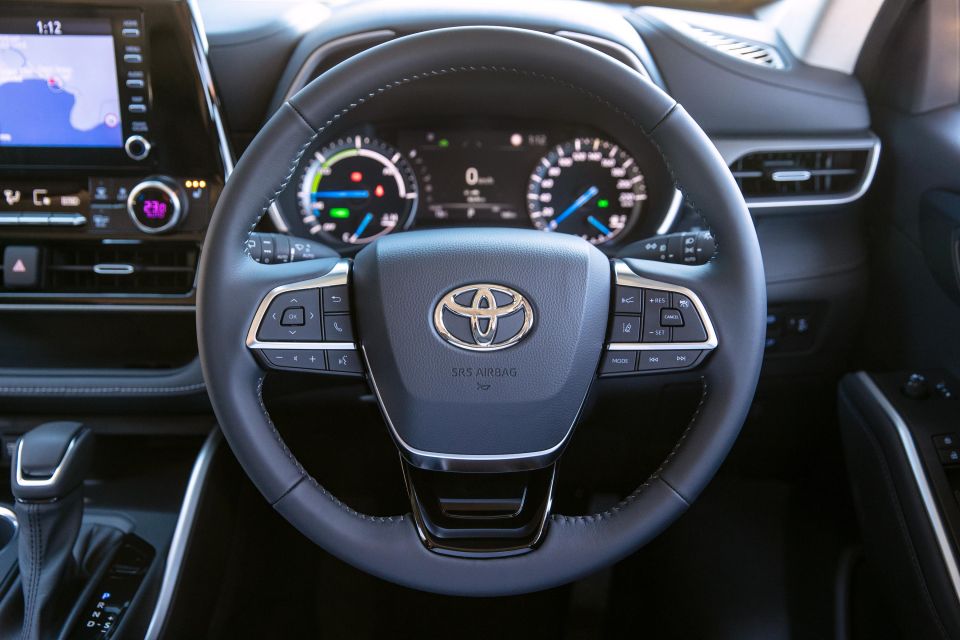
The mediocre infotainment system ties is with a cabin design that’s simple, but not what you’d call particularly high-end or interesting.
It all looks hard-wearing, but the Hyundai Palisade is no less practical and packs way more showroom appeal. We’ve called out the same thing with the Grande, so it’s not just a GXL issue – the design is a bit fleet special, but its price is anything but.
The second row is every bit as spacious as you’d expect. Headroom is generous, legroom is plentiful behind tall drivers, and the bench is broad enough to seat three adults.
There’s a fold-down central armrest with cupholders, a dedicated climate control zone, roof-mounted air vents, along with two USB-A ports to charge phones or iPads.
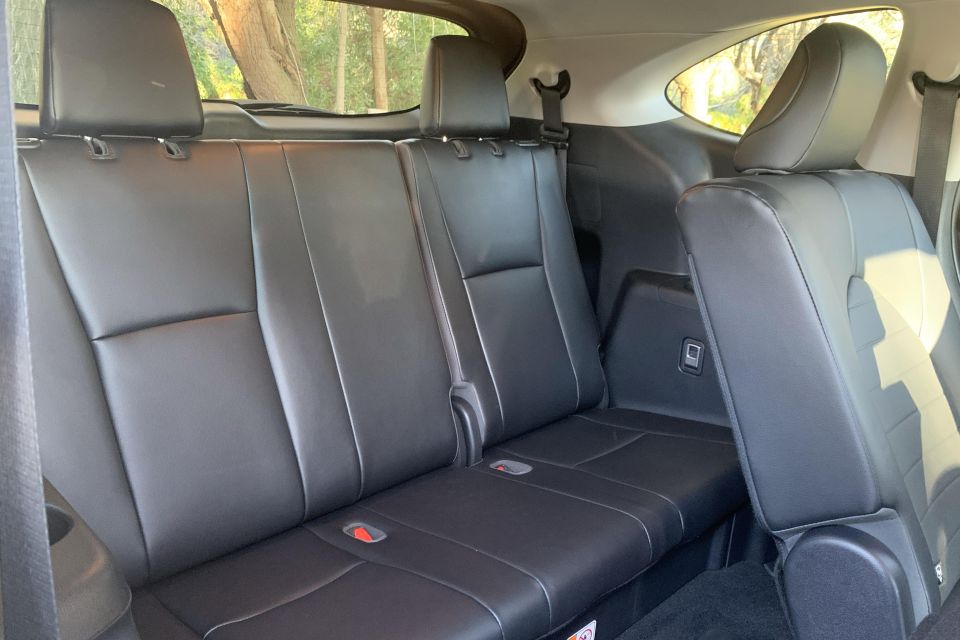
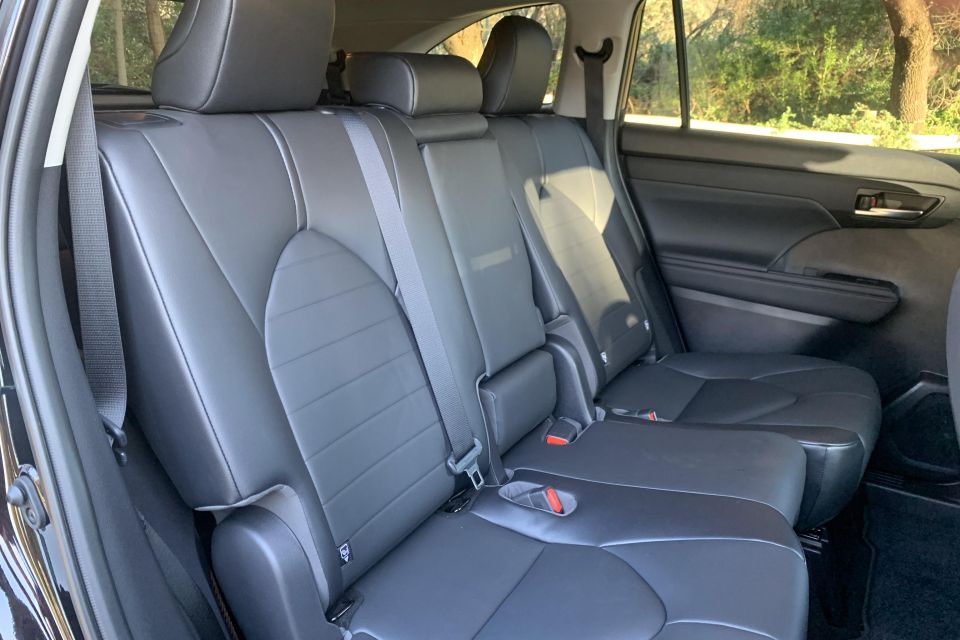
The second row can slide up to 180mm to free up more third-row legroom or boot space. There are top-tether points on all three second-row seats, and the bench folds flat.
Access to the third row comes courtesy of a handle which tilts the seatback and slides the base. Kids will have no trouble sliding into the back-back, teenagers will find it harder. Burly adults best not bother.
Headroom back there is fine for little folks, and the bench is surprisingly broad. That’s because the Kluger is an eight-seater overseas, despite only having seven seatbelts in Australia.
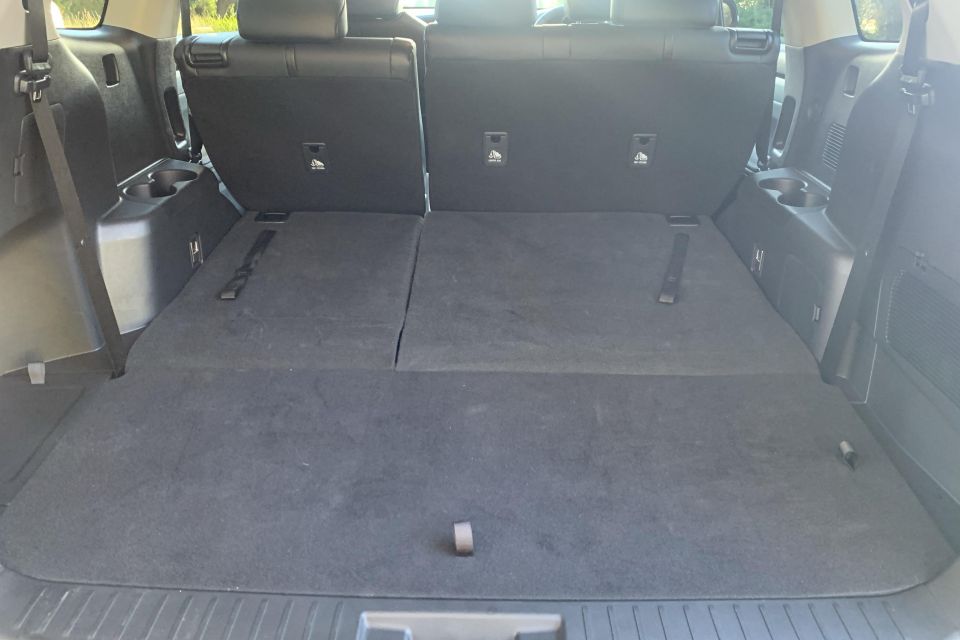

There’s a surprising amount of toe room beneath the second-row, although leggy passengers will instantly want out.
Once again there are roof-mounted air vents back there, along with cupholders.
The boot measures 241 litres if you’re making use of all seven seats. Put the third row down and that increases to 552L, expanding to 1150L with the second row folded flat.
Points to Toyota for leaving space to stow the cargo blind under the boot floor.
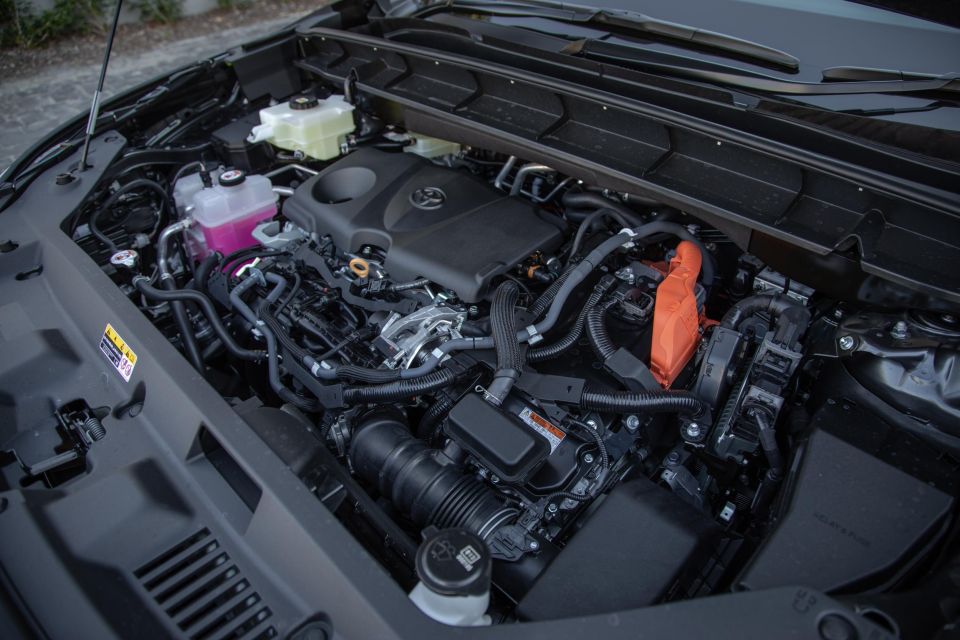
Power in the Kluger Hybrid comes from a 2.5-litre four-cylinder petrol engine, mated with two electric motors for all-wheel drive.
The naturally-aspirated petrol engine produces 142kW of power and 242Nm of torque on its own, but combined with the motors Toyota quotes a system output of 184kW.
The system operates through an e-CVT transmission, and can send up to 80 per cent of its torque to the rear wheels or 100 per cent to the front wheels when the situation demands.
There’s a 65L fuel tank, and the Kluger drinks 95 RON premium unleaded fuel.
Claimed fuel economy is 5.6L/100km on the combined cycle, which is seriously impressive for such a big family SUV. We saw 5.8L/100km on a week in the city, which is staggeringly good for such a big car.

At 4966mm long, 1930mm wide and 1755mm tall, there’s no getting away from the Kluger’s size.
It’s a comfortable family bus, but it’s a much more refined family bus than before.
For starters, the hybrid setup is brilliant in city traffic. It’s rare the petrol engine is called on below 20km/h, with the Kluger instead defaulting to smooth, quiet e-power off the mark.
When the petrol engine does fire, it fires smoothly. There’s no real vibrations or noise in the cabin on light throttle inputs, as the car’s brain expertly blends four-cylinder petrol power with thrust from the electric motors.
It’s not quite as capable as a plug-in hybrid, though. With a very light touch the e-motor will take the Kluger up to about 40km/h, but the battery runs flat fast so it’s rare you can rely on electric power alone for long.

Demand more from the powertrain and the petrol engine can get vocal, as the e-CVT holds the naturally-aspirated petrol engine at a set speed to extract more go. With one person on board it gets a decent move on, with a full load of people and gear it needs to work a bit harder.
Toyota’s ‘eFour’ all-wheel drive system is relatively clever, but bury the accelerator off the mark when it’s wet and it’ll chirp the front tyres before shuffling torque to the rear axle, and asking for more from the rear motors.
Like the other cars built on the latest TNGA chassis, the Kluger is easy to pilot in the city. The steering is light, and the reversing camera and parking sensors team up to make it clear where the car’s extremities are.
It’s a shame the reversing camera is so grainy, though. Again, Toyota needs to up its game on the technology front.
With chubby sidewalls on its tyres and smart suspension tune, the big Kluger excels at ironing out the worst Australia’s roads can throw at it.
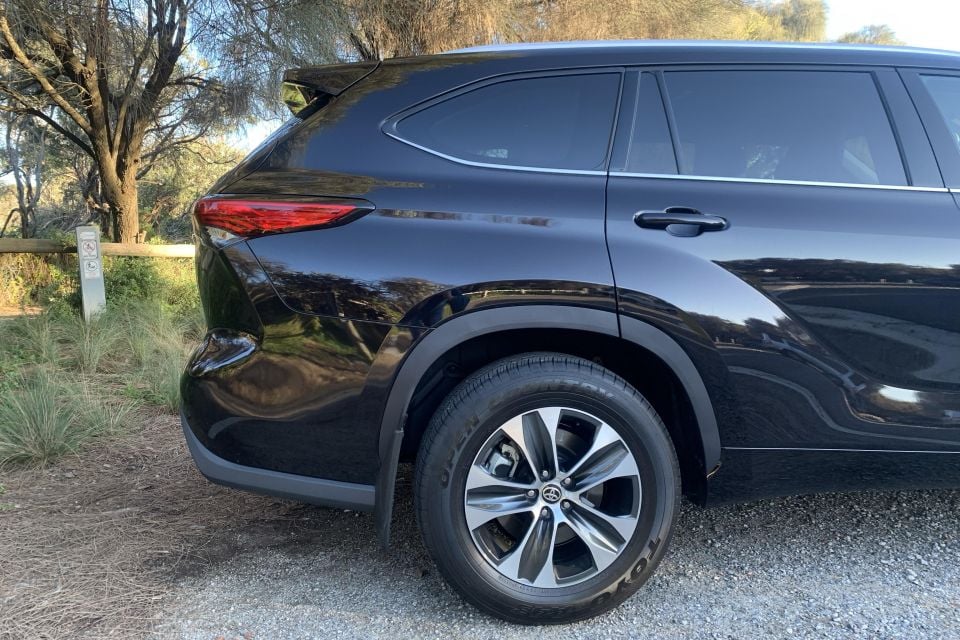
CarExpert helps new car buyers save thousands with expert reviews, honest advice, and transparent pricing – no dealer pressure and no sales games.
It floats over speed bumps and potholes, thanks to a ride aimed at delivering maximum comfort – sportiness be damned.
It’s nice to see Toyota prioritising what really matters in a family car, rather than trying to make the Kluger into something it’s not.
Big highway dips can make the car feel a bit floaty, with the big body taking one, two movements to settle, but it’s otherwise pretty well tied-down. It’s less like a boat than its predecessor, although the mushy brake pedal doesn’t inspire confidence.
Combined with Toyota’s well-tuned suite of driver assists and the fact there’s very little wind, tyre, or engine noise at 100km/h, this is an SUV happy munching highway miles… with one caveat.
It’s worth test driving the petrol V6 if the majority of your driving is at highway speeds. The hybrid isn’t underpowered, but it lacks the muscle of the pure petrol engine for overtaking or hauling a full load up hills.

The Toyota Kluger is backed by a five-year, unlimited-kilometre warranty, extending to seven years for the engine and driveline.
Maintenance is required every 12 months or 15,000km. Using the Toyota capped-price program, the first five services will set you back $250 each.
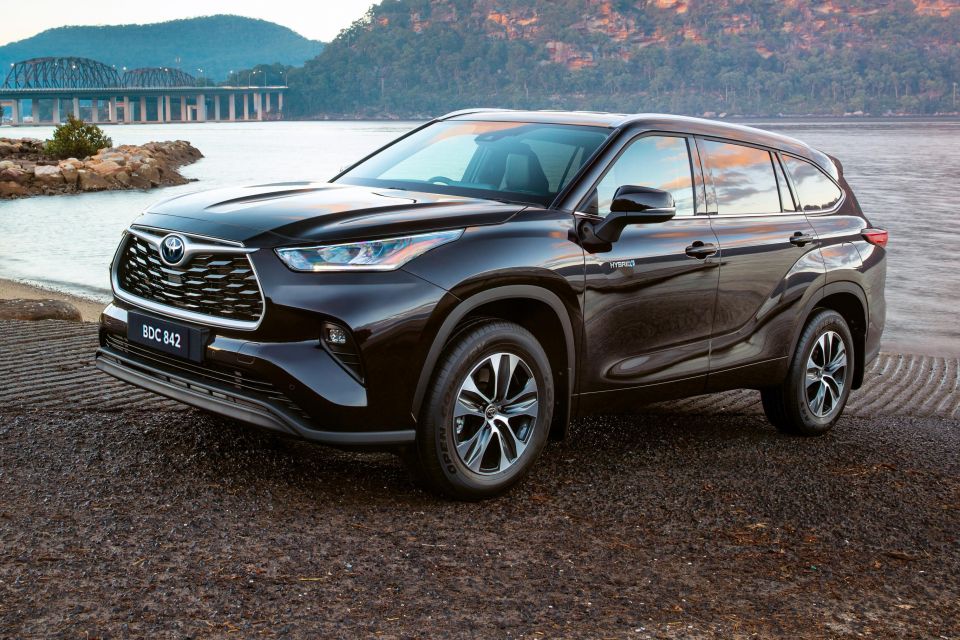
To hybrid or not to hybrid, that is the question…
The hybrid Kluger is a no-brainer if you do most of your driving in the city. It’s unbelievably efficient in traffic when you consider its size, not to mention smooth and quiet thanks to its electric motor.
There are people who think Toyota hybrids are a waste of time, a speed bump in the road to fully-electric power, but there’s no doubt the Kluger Hybrid offers real-world benefits to the average commuter.
Based on the official combined fuel use figures and the average price of unleaded in Melbourne at the time of writing, someone driving 15,000km per year will pay around $850 per year less for petrol if they opt for the hybrid instead of a V6 AWD model.

If you’re in the city most of the time, those savings could be even bigger.
If you’re spending more time on the highway though? I’m not so sure the hybrid makes sense.
The petrol engine has to work hard uphill with one or two occupants on board, let alone a load of passengers and luggage, and the electric motors can’t work their fuel-saving magic as effectively.
Regardless of which engine you choose, the GXL shapes as the smartest choice in the Kluger range.
It feels a bit utilitarian in places, but there’s enough luxuries to justify the $9800 jump over the equivalent GX – and the Grande is full of nice-to-have features that aren’t essential.
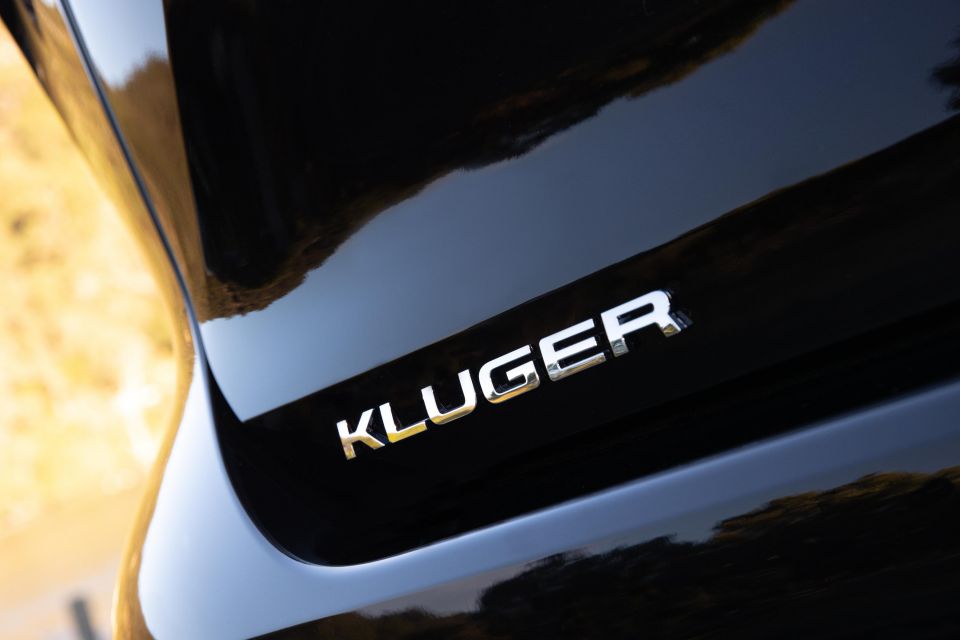
MORE: Everything Toyota Kluger
CarExpert helps new car buyers save thousands with expert reviews, honest advice, and transparent pricing – no dealer pressure and no sales games.
Scott Collie is an automotive journalist based in Melbourne, Australia. Scott studied journalism at RMIT University and, after a lifelong obsession with everything automotive, started covering the car industry shortly afterwards. He has a passion for travel, and is an avid Melbourne Demons supporter.


James Wong
2 Months Ago
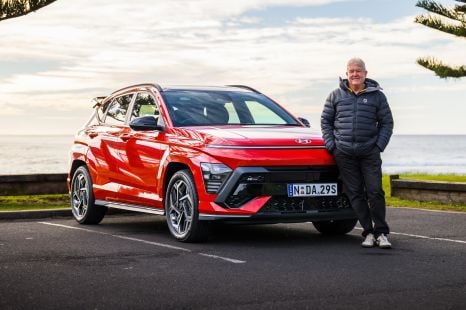

Anthony Crawford
1 Month Ago
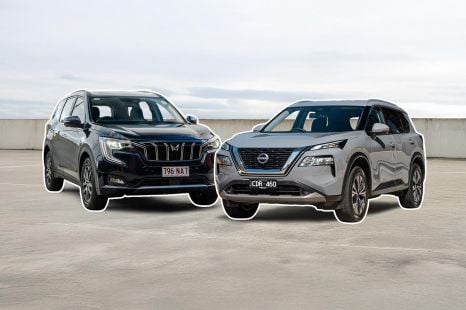

Andrew Maclean
1 Month Ago
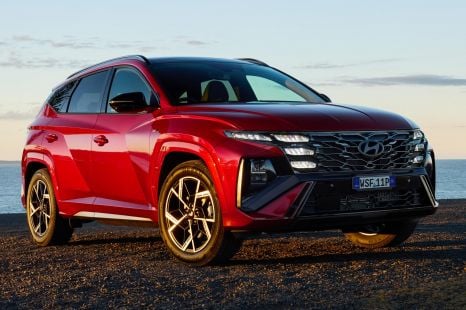

James Wong
1 Month Ago
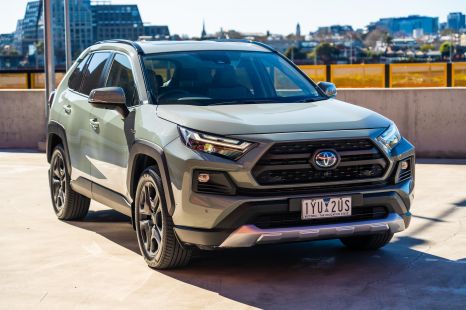

Marton Pettendy
19 Days Ago


Marton Pettendy
18 Days Ago